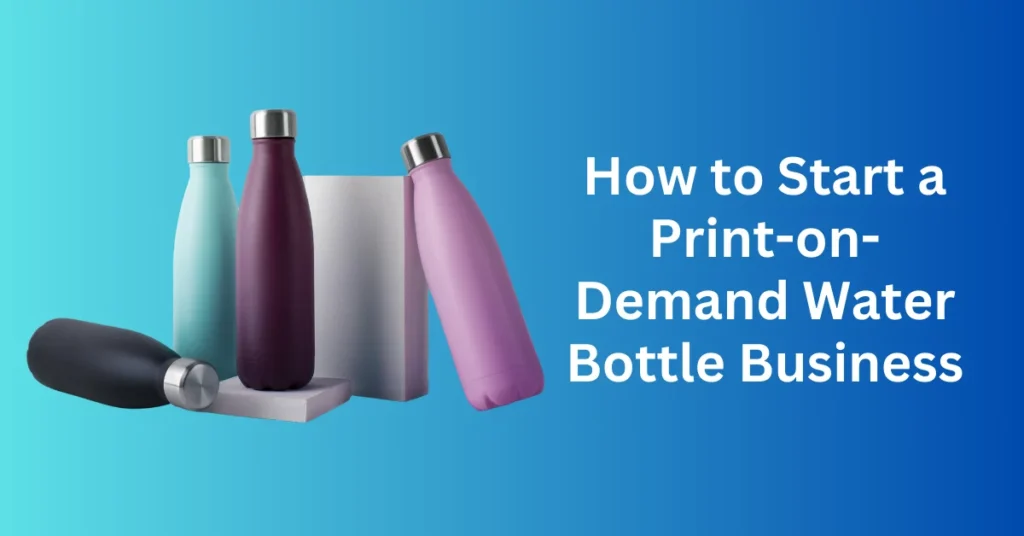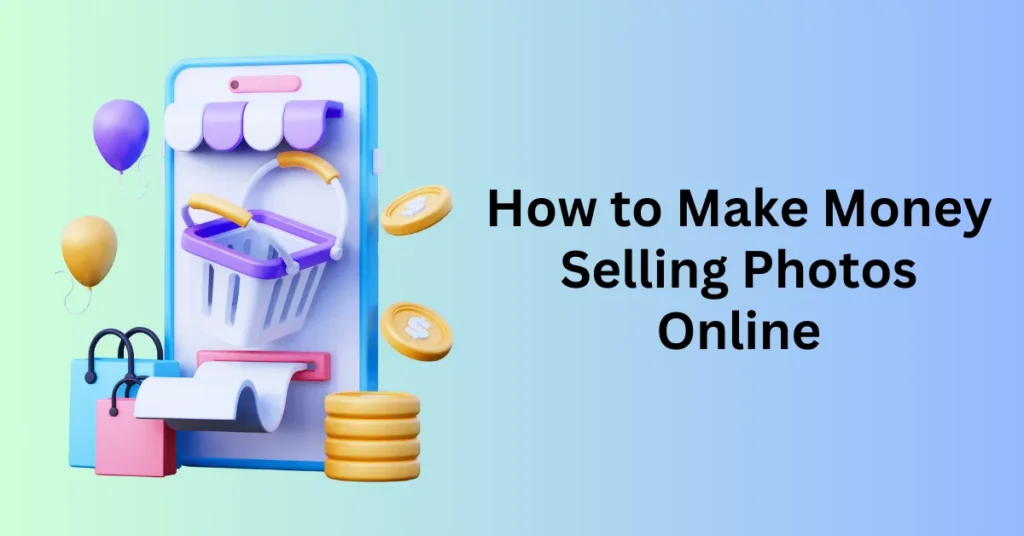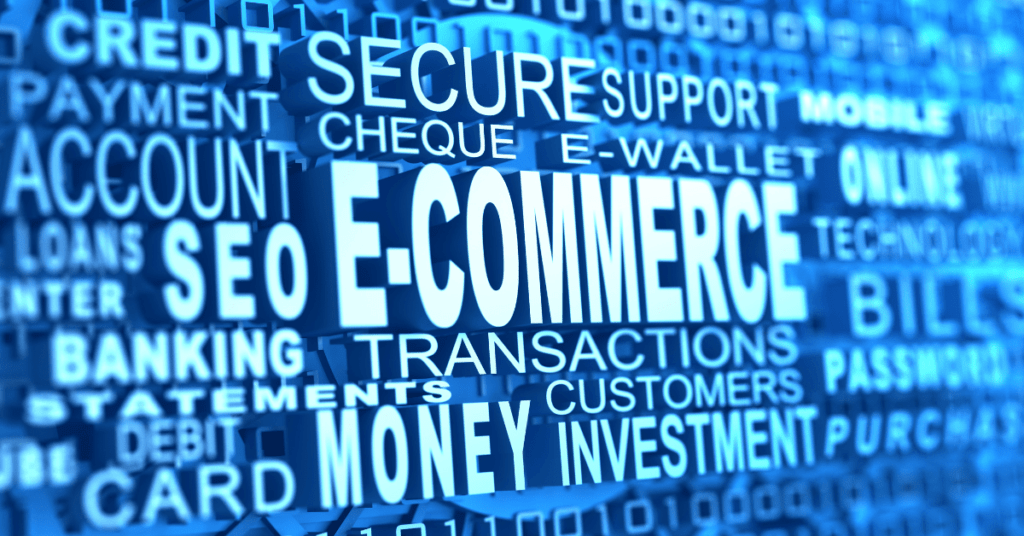If you’re seeking an alternative to the conventional 9-to-5 routine, launching a water bottle business through Print on Demand (POD) could be an ideal solution. Notably, POD enables anyone to kickstart their entrepreneurial journey without the upfront costs or the complexities of managing inventory, order fulfillment, and shipping logistics.
This comprehensive guide outlines the step-by-step process of establishing a successful water bottle business using POD. Specifically, we’ll cover everything from conducting market analysis and niche selection to branding and product design, empowering you to build a thriving venture in this dynamic industry.
Therefore, let’s dive into each phase of this exciting journey to help you embark on your entrepreneurial path with confidence and clarity.
Why Start a Print-on-Demand Business?

Harness the power of Print on Demand (POD) to unleash your creativity and entrepreneurial spirit. This innovative model allows you to craft unique product designs and sell them online, with suppliers handling the entire fulfillment process.
Advantages of the Print-on-Demand Business Model:
- Low Investment and Risk: Unlike traditional retail models, POD eliminates the need for upfront investment in inventory. Products are printed only when orders are received, ensuring you don’t tie up capital in unsold stock or storage costs.
- Efficient Order Fulfillment: Say goodbye to logistical headaches. When a customer places an order, POD suppliers swiftly print and ship the product directly to the buyer’s doorstep. This streamlined process saves you time and effort.
- Creative Freedom: Unleash your imagination! With POD, you have the liberty to create any design you envision. Develop a unique brand identity with original artwork and concepts.
- Scalability Made Easy: Start small and expand gradually. The beauty of POD is its scalability. You can adjust your designs based on market trends and demand, allowing you to grow your business organically.
Create Your Free Printify POD Account Now
Step 1: Market Research – Print on Demand Water Bottle
Conducting comprehensive market research is essential for gaining valuable insights into your industry landscape, understanding your competitors, and deciphering consumer preferences. This process can be approached through various strategic methods:
- Trend Identification: Utilize powerful research tools such as BuzzSumo, Ahrefs, or Semrush to uncover current trends and popular search topics among potential customers. By analyzing trending keywords and content, you can stay ahead of market shifts and adapt your offerings accordingly.
- Competitor Analysis: To begin, delve into prominent e-commerce platforms like eBay, Amazon, and Etsy to study the range of water bottles available. By taking note of the features that top-selling bottles possess and analyzing pricing strategies, you can gain valuable insights. This investigation will illuminate gaps in the market and reveal opportunities for differentiation.
- Social Media Insights: Furthermore, leverage the vast reach of social media platforms like TikTok, Instagram, and Facebook to gain real-time customer feedback and preferences. By monitoring discussions, comments, and user-generated content related to water bottles, you can identify emerging consumer desires and trends.
By committing time and effort to these research activities, you can pinpoint underserved market segments and strategically position your product to address unmet needs effectively. This proactive approach will empower you to not only meet but exceed customer expectations in a competitive marketplace.
Step 2: Select a Niche – Print on Demand Water Bottle
Defining a niche within your target market can be a game-changer for small businesses seeking to stand out and connect with their ideal customers. A niche represents a specialized segment of the market characterized by unique interests or preferences. Whether it’s enthusiasts of llamas, professional chess players, or folk music fans, identifying and catering to a niche can enhance brand visibility and customer engagement.
To ascertain the viability of your business idea within a specific niche, utilizing tools like Google Trends can provide valuable insights into the popularity and interest levels associated with your chosen market segment. Here’s how you can leverage Google Trends effectively:
- Identify Relevant Keywords: Start by identifying keywords related to your niche market. For instance, if your niche is “llama lovers,” relevant keywords might include “llama gifts,” “llama merchandise,” or “llama-themed products.”
- Explore Trend Data: Enter your chosen keywords into Google Trends to explore the search interest over time. Google Trends provides insights into whether your niche is gaining traction, maintaining steady interest, or declining in popularity. Analyze the trend graph to identify seasonal fluctuations or emerging patterns.
- Compare Multiple Keywords: Firstly, compare different keywords or phrases within your niche to assess which terms are more widely searched. This comparison can also inform your content strategy and product offerings based on what resonates most with your target audience.
- Evaluate Geographic Interest: Then, use Google Trends to analyze regional interest in your niche. This data can be valuable for targeting specific markets or tailoring marketing campaigns to resonate with regional preferences.
- Monitor Industry Trends: Additionally, beyond specific keywords, monitor broader industry trends related to your niche. Look for related topics, rising queries, or associated categories to uncover additional opportunities or potential collaborations.
Create Your Free Printify POD Account Now
Step 3: Build Your Brand – Print on Demand Water Bottle
Developing a robust brand identity is crucial for fostering growth and building meaningful connections with customers. When establishing your brand, it’s beneficial to consider the four Vs of branding: Vision, Values, Voice, and Visuals. Here’s a breakdown of each component:
Vision: Define Your Future
Envision where you want your business to be in the future. Set clear, achievable goals and articulate your long-term vision. Consider questions like:
- What is the ultimate purpose or mission of your business?
- How do you envision your business evolving over the next 5-10 years?
- What impact do you aim to make in your industry or community?
Values: Establish Core Principles
Determine the fundamental values that define your business’s ethos and guide decision-making. Reflect on:
- What principles and beliefs are non-negotiable for your business?
- What causes or issues are important to you as a brand?
- How do you want your brand to be perceived by customers and stakeholders?
Voice: Develop Consistent Communication
Define the tone and style of communication you will use to engage with your target audience across all touchpoints. Consider:
- What personality traits best represent your brand (e.g., friendly, authoritative, playful)?
- How will you address your audience—formal or casual, informative or entertaining?
- Ensure consistency in messaging across your website, social media, customer support, and marketing materials.
Visuals: Design a Distinctive Aesthetic
Craft a visually compelling identity that captures the essence of your brand and sets you apart from competitors. Focus on:
- Logo design, colour palette, typography, and overall graphic style.
- Ensure visual elements align with your brand’s values and resonate with your target audience.
- Create a cohesive visual identity that can be seamlessly integrated into all brand collateral.
By carefully defining your brand’s Vision, Values, Voice, and Visuals, you can then establish a compelling brand identity that resonates with your audience and fosters lasting relationships. This strategic approach not only communicates your uniqueness but also creates a strong foundation for sustained growth and success in the marketplace.
Step 4: Select and Design Water Bottles – Print on Demand Water Bottle
When selecting water bottles for your store, it’s crucial to align your choices with your niche and cater to your customers’ specific preferences. Here’s a step-by-step guide to help you choose the right water bottle styles and apply your unique designs using Printify’s resources:
Step 1: Choose Which Water Bottle To Sell
- Explore Options: Browse through Printify’s catalogue featuring aluminium, plastic, and stainless steel water bottles. Consider factors such as style, size, colour, and material to match your niche’s preferences.
- Select Suitable Designs: Opt for water bottle styles that can be easily customized and complemented with your unique designs.

Step 2: Apply Your Design
- Upload or Create Designs:
- Upload Images: Utilize your own images or artwork to personalize water bottle designs.
- AI Image Generator: Use the AI Image Generator to create original designs tailored to your niche.
- Add Text and Graphics:
- Text Editor: Incorporate meaningful sayings, messages, or quotes using the Text Editor. Choose from a variety of fonts to enhance your design’s appeal.
- Graphics Library: Access over 150 free images from Printify’s Graphics Library to enrich your water bottle designs.
- Utilize Special Tools:
- Pattern Tool: Employ the Pattern Tool to create captivating all-over-print designs that stand out.
- Fit and Fill: Speedily place and adjust your images with the Fit and Fill feature for optimal visual impact.
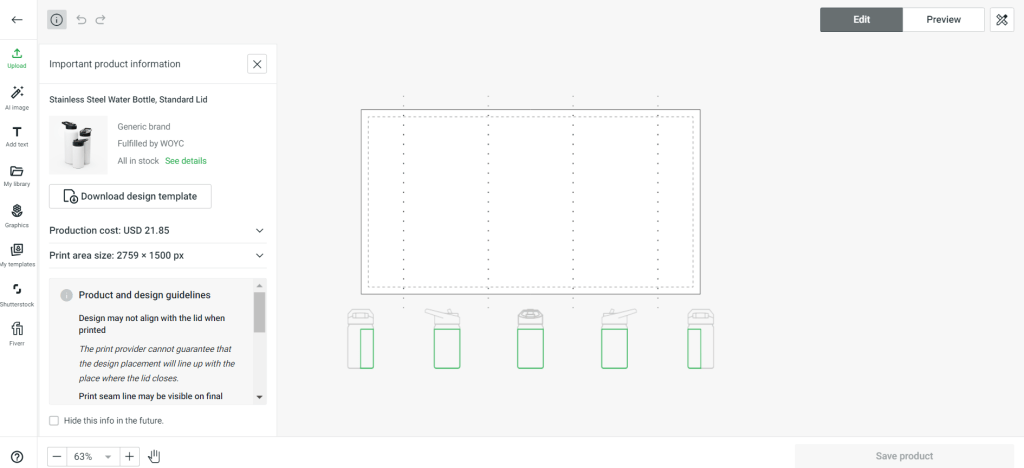
By following these steps and leveraging Printify’s user-friendly tools, you can curate an appealing collection of custom-designed water bottles that resonate with your niche audience. Remember, the key to success lies in understanding your customer’s needs and delivering products that align with their interests and preferences.
Create Your Free Printify POD Account Now
Step 5: Choose Which Platform to Sell – Print on Demand Water Bottle
Choosing the optimal sales channel for your eCommerce venture can significantly broaden your market reach and bolster sales figures. Each sales channel boasts distinct advantages and drawbacks, demanding varying degrees of technical proficiency. The key lies in selecting the channel that offers maximal exposure to your target demographic while yielding the highest returns.
eCommerce Platforms
Opting for eCommerce platforms can grant extensive customization capabilities to tailor your online store. These platforms furnish ready-to-use templates for swift website setup, facilitating content addition, promotional campaigns, and comprehensive business management.
Advantages of eCommerce Platforms:
- Highly customizable storefronts
- Ability to retarget customers efficiently
- Greater control over customer data
- Abundance of advanced features for enhanced functionality
Disadvantages of eCommerce Platforms:
- Time-consuming setup process
- Elevated marketing expenditure
- Necessitates technical acumen for optimal utilization
- Additional costs associated with premium features
Examples of notable eCommerce platforms encompass Shopify, Squarespace, Wix, WooCommerce, BigCommerce, and PrestaShop.
eCommerce Marketplaces
Alternatively, eCommerce marketplaces such as Etsy, eBay, and Walmart enable merchants to establish storefronts within established platforms, leveraging existing traffic and customer trust. Marketplaces necessitate minimal technical expertise and offer integrated marketing tools to amplify product visibility.
Advantages of eCommerce Marketplaces:
- Rapid storefront setup
- Access to a built-in customer base
- Beginner-friendly interface
- Simplified store maintenance
Disadvantages of eCommerce Marketplaces:
- Limited customization options
- Heightened competition among sellers
- Stringent marketplace policies
- Imposition of various fees on transactions
Printify Pop-Up Store
The Printify Pop-Up Store presents an expedient solution for swiftly launching a storefront without the need for website development, inventory investment, or logistical concerns. This innovative service streamlines the sales process, enabling entrepreneurs to focus on product offerings and customer engagement while Printify handles printing, packaging, and order fulfillment.
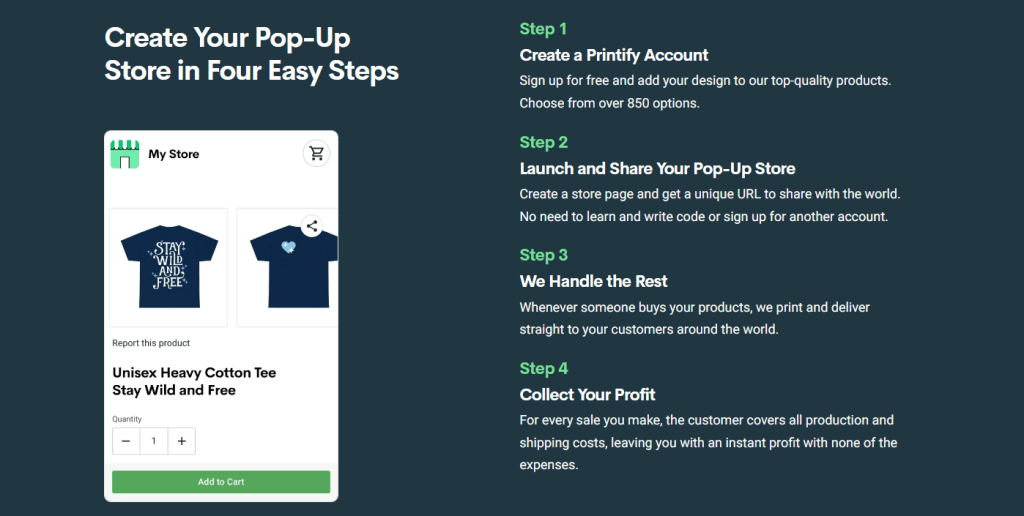
In essence, the ideal sales channel hinges on aligning your business goals with the unique attributes of each platform or marketplace. Whether prioritizing customization, expedited setup, or operational simplicity, selecting the right channel can catalyze business growth and amplify profitability in the competitive eCommerce landscape.
Create Your Free Printify POD Account Now
Step 6: Market Your Business – Print on Demand Water Bottle
Crafting a comprehensive marketing plan is vital to stand out in a competitive landscape, capture customer interest, and drive meaningful sales. Below are crucial steps and potential marketing channels to consider when formulating your strategy:
Steps to Creating an Effective Marketing Plan:
Firstly, determine the primary objectives of your marketing efforts. Are you aiming to boost brand visibility, generate leads, increase sales, or achieve a combination of these goals? Clearly defining your objectives will guide the direction of your marketing strategy and help measure its success.
Then, conduct detailed market research to comprehend your target demographic. By gaining insights into their preferences, behaviours, and the digital platforms they frequent, you can better inform your marketing strategies. This understanding will then ensure your efforts are tailored to reach and resonate with your intended audience.
Then, develop compelling messaging that speaks to your audience’s needs and desires. Highlight the unique value propositions of your products or services and emphasize how they solve specific pain points. Crafting messages that connect emotionally with your audience can significantly enhance engagement and loyalty.
Subsequently, allocate resources based on your business’s financial capabilities. Determine how much you can afford to invest in marketing activities such as advertising, content creation, and promotional campaigns. Budgeting wisely will ensure you can sustain your marketing efforts over the long term.
Finally, choose the most suitable marketing channels based on your audience’s preferences and behaviours. Optimize your content and ads for the selected channels to maximize engagement and conversions. By focusing on the platforms where your audience is most active, you can increase the effectiveness of your marketing campaigns.
Social Media Marketing:
Social media marketing utilizes platforms like Facebook, Instagram, TikTok, and LinkedIn to enhance brand visibility and engage with potential customers. By establishing and managing business profiles on these platforms, you can showcase products or services through visually appealing content such as photos, videos, and interactive posts like challenges and giveaways. Besides, this strategy enables businesses to create a strong online presence, foster customer relationships, and leverage the viral nature of social media to expand their reach.
Content Marketing:
Content marketing involves creating valuable and informative content such as articles, videos, and product reviews to attract and educate your target audience. The primary goal is to provide relevant insights and solutions while subtly promoting your products or services. Effective content marketing requires thorough audience research to understand their needs and preferences, followed by strategic content planning and distribution across various platforms. By integrating search engine optimization (SEO) techniques, businesses can then optimize content to improve search engine visibility and attract organic traffic.
Search Engine Optimization (SEO):
SEO is the practice of optimizing website content and structure to rank higher in search engine results pages (SERPs) for relevant keywords. To begin with, this involves conducting keyword research using tools like SEMrush or Ahrefs to identify popular search terms that align with your business offerings. By incorporating these keywords into product titles, descriptions, and image alt-texts, you can improve organic search visibility.
Furthermore, optimizing on-page elements such as meta tags, headings, and URLs enhances website performance and user experience. Ultimately, these efforts drive more qualified traffic to your site.
Email Marketing:
Email marketing remains a cornerstone of digital marketing. It allows businesses to nurture leads, promote products, and drive conversions through personalized communication. Platforms like MailerLite or Omnisend offer templates, design tools, and automation features to streamline email campaign management. Effective email marketing practices include audience segmentation based on demographics or behaviour, personalized content customization, and automation of workflows such as welcome emails and abandoned cart reminders. By monitoring key performance metrics like open rates and click-through rates, businesses can continuously optimize email campaigns for maximum impact.
Search Engine Marketing (SEM):
SEM involves paid advertising campaigns on search engines like Google Ads or Microsoft Advertising to boost website visibility and drive targeted traffic. This strategy is particularly effective for businesses looking to achieve immediate results and capture potential customers actively searching for related products or services. Successful SEM campaigns require strategic keyword targeting, compelling ad copywriting, and effective budget management to maximize return on investment (ROI). To achieve this, implementing conversion tracking and analyzing campaign performance metrics is essential. By doing so, businesses can refine their SEM strategies and optimize advertising spending for optimal results.
By leveraging these diverse digital marketing strategies and tools, you can then establish a strong online presence, connect with their target audience, and drive sustainable growth in a competitive marketplace. Moreover, continuous refinement and adaptation based on performance analytics are essential for optimizing marketing efforts and achieving long-term success.
Step 7: Optimize and Grow Your Business – Print-on-Demand Water Bottle
To establish and grow a successful business, it’s essential to regularly assess the performance of your efforts and remain open to expansion opportunities. By analyzing your business’s performance, you can identify strengths to leverage and address weaknesses to improve overall operations.
Expanding your product collection is a strategic approach to broaden your customer base and increase market appeal as your business evolves. Printify also offers a unique advantage by enabling you to effortlessly add new products to your store without incurring additional expenses.
Whether you’re interested in selling ceramic mugs, tote bags, stainless steel water bottles, or other customizable items, Printify provides a diverse selection of products to cater to your target audience’s preferences. This flexibility allows you to continually innovate and adapt your product offerings based on market trends and customer feedback.
Create Your Free Printify POD Account Now
Start a Water Bottle Business With Printify
Starting your own online store is easier than you might imagine, especially when you partner with Printify. This platform empowers entrepreneurs to launch their businesses without the usual challenges of high upfront costs, inventory management, or the complexities of order fulfillment and shipping logistics.
Let’s explore how you can turn your water bottle business idea into a reality, step by step.
Step 1: Sign Up with Printify
First, begin by registering for a free Printify account, which is open to everyone regardless of location.
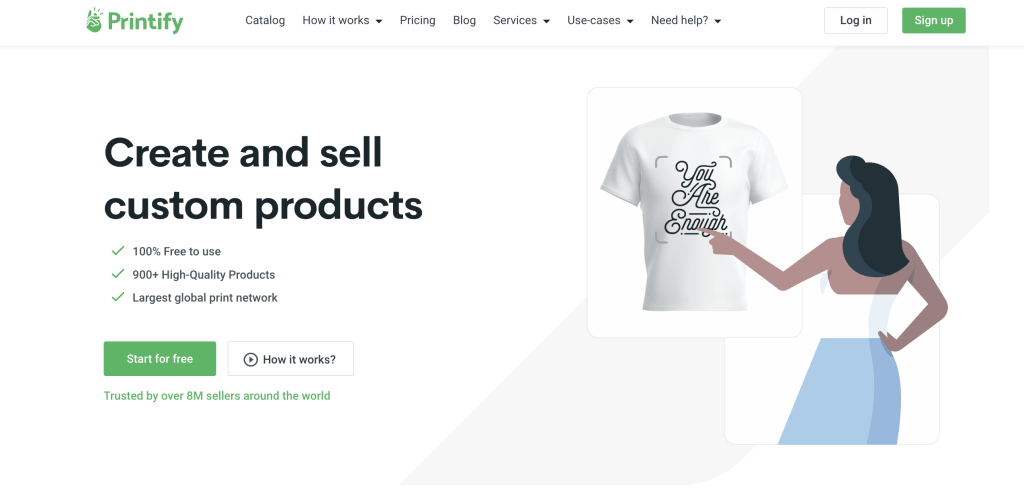
Step 2: Browse Water Bottle Styles
Discover a wide variety of water bottle styles, sizes, and materials in Printify’s extensive catalog. Then, select the ones that align with your vision and start designing.
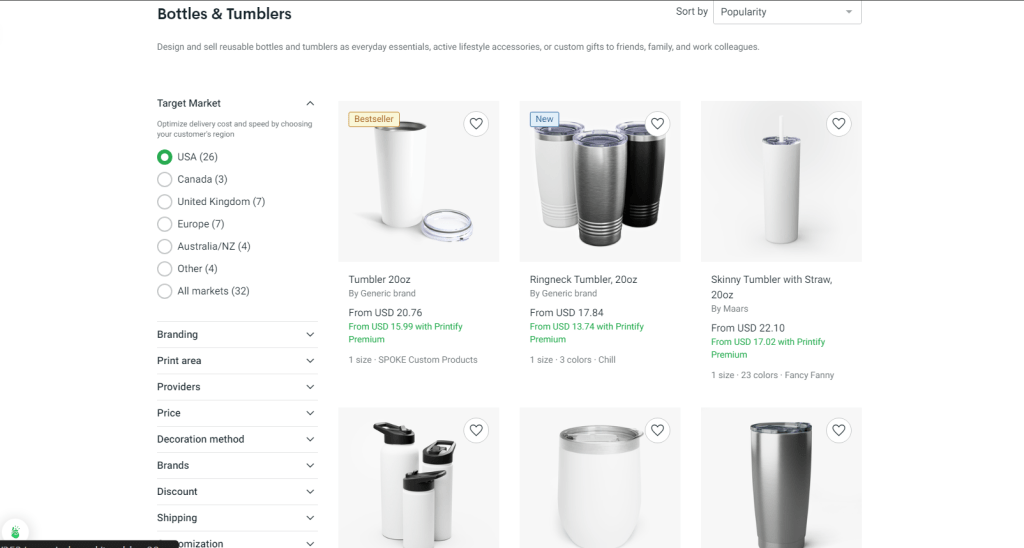
Step 3: Personalize with Your Design
After that, you can use Printify’s intuitive Product Creator tool to upload your design, add text, or even create a new design using the AI Image Generator, Text Editor, and Graphics Library.

Step 4: Integrate with a Sales Channel
Besides, Printify seamlessly integrates with major eCommerce platforms and marketplaces, allowing you to choose the best channels to display and sell your products.
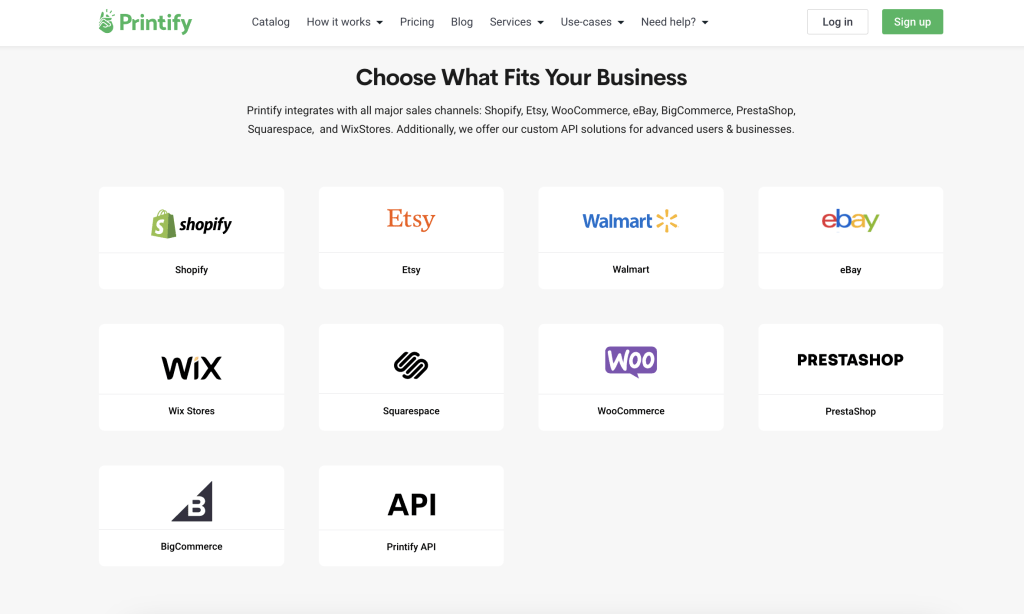
Step 5: Launch Your Marketing Campaign
Once your products are live in your store, kickstart your marketing initiatives to attract customers. When a sale is made, Printify handles the rest—printing, packaging, and shipping the order directly to your customer.
In summary, Printify empowers aspiring entrepreneurs to establish and expand their online businesses with remarkable ease and flexibility. By leveraging on Printify, you can focus on your creativity and marketing strategies while they manage the operational complexities behind the scenes.
Final Thoughts: How to Start a Print-on-Demand Water Bottle Business
As we conclude our guide on starting a water bottle business, we trust you’ve gained valuable insight, inspiration, and confidence to realize your business idea. While this venture demands dedication, the market offers promising opportunities and the rewards are certainly worth the effort.
